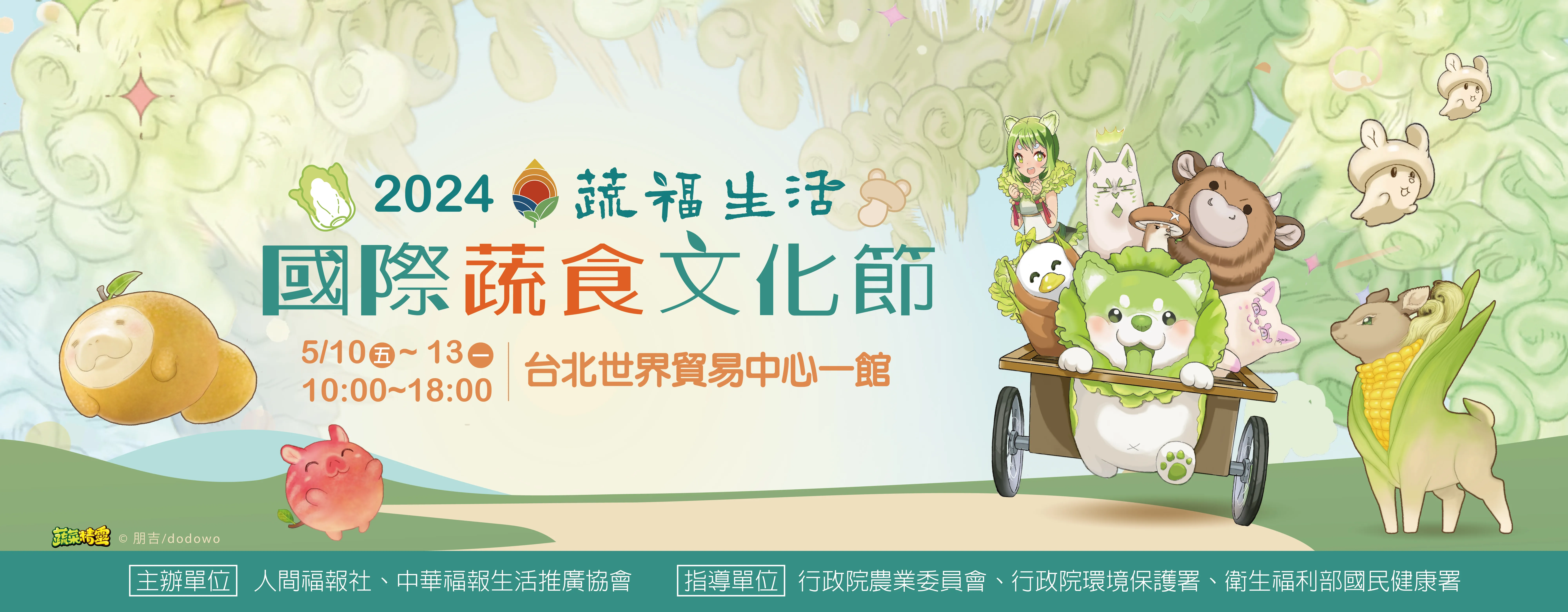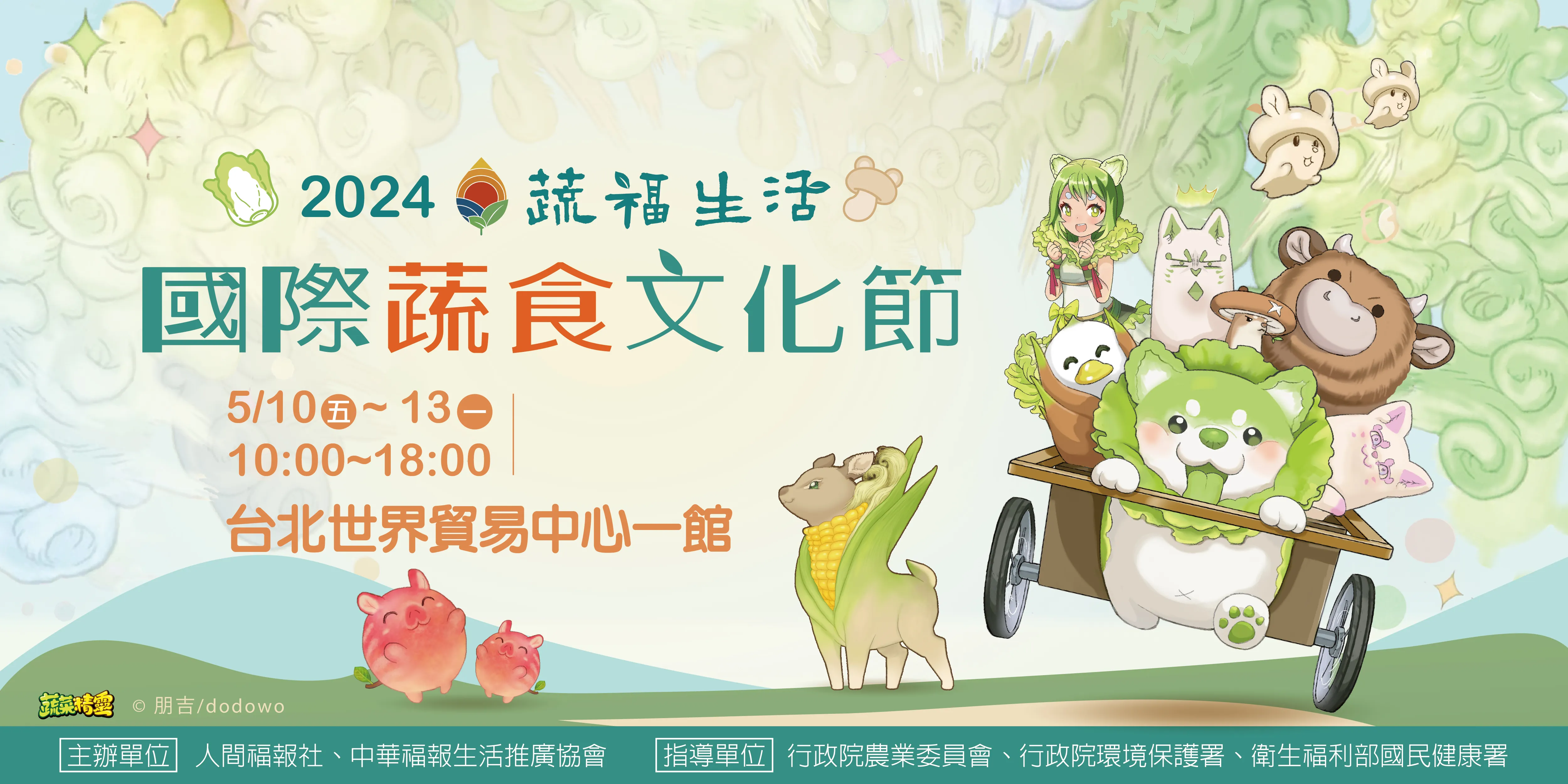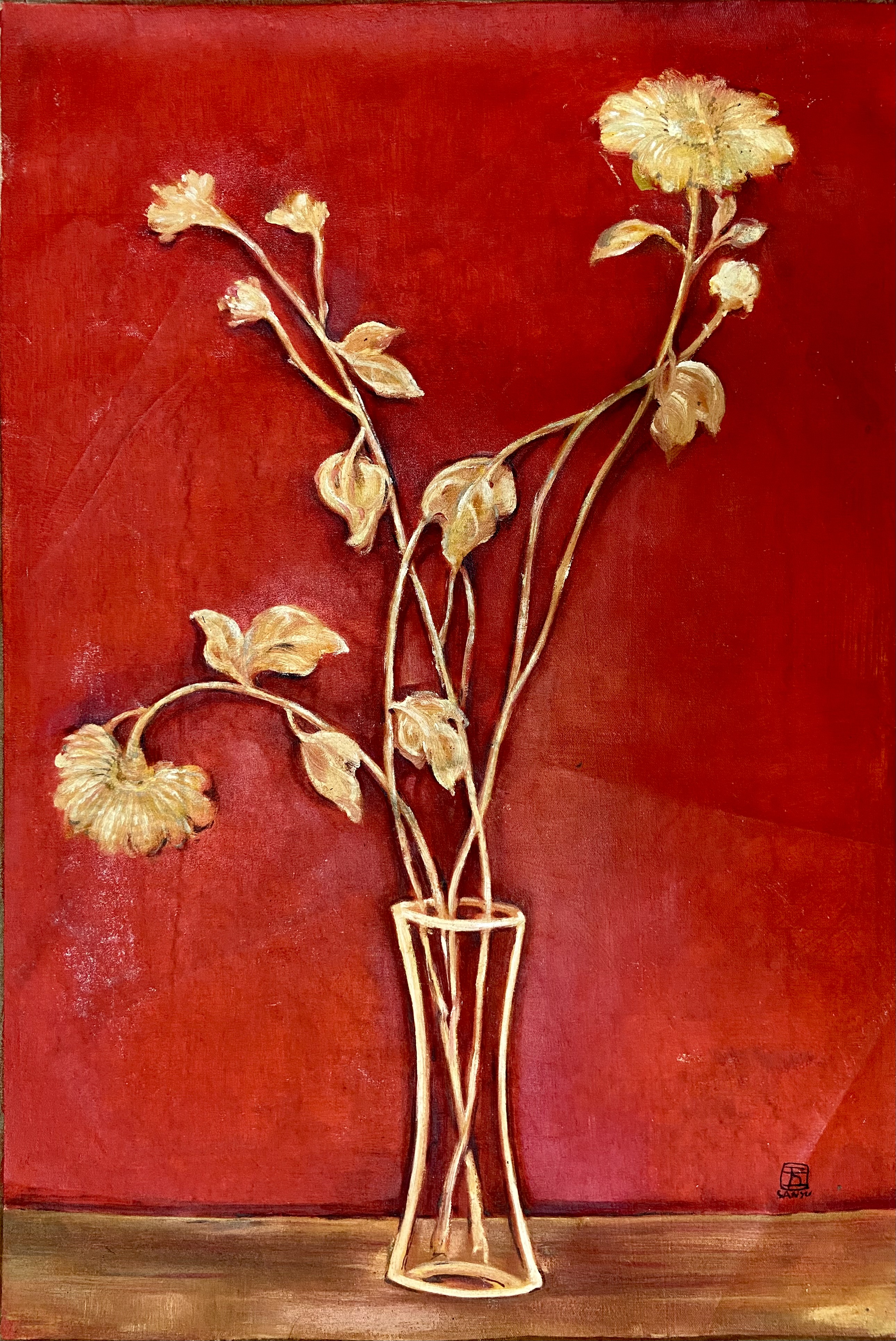


| 時代: | 西元1940年代 A.D. 1940s |
| 尺寸: | 長度:90 cm 寬度:61 cm (未含外框) Length:90 cm Width:61 cm |
| 質地: | 油畫布 Oil painting |
收藏人:王惠民先生
此幅常玉的‟紅底黃菊”為常玉的油畫靜物作品,此幅畫作花瓶與背景交疊的部分、花和葉子局部,稍微以書法性白色線條打邊,立體、色澤深淺不一的線條瀟灑十足,並納入山水圖畫的留白概念,整幅畫構圖簡約。此幅畫作以紅色為背景、土黃色為桌面,背景右側上方部分所用油彩顏色較重,有些微油彩自然流淌的痕跡,讓背景整體明暗清晰,更襯托出菊花的立體感。黃色的菊花,搭配同色系的葉子、莖脈,插於黃色的花瓶中,雖然菊花、葉子和莖脈都為同色系,但藉由些微色系深淺、陰影,襯托出整體的層次感。此畫是常玉慣用、油畫作畫方式最高境界的平塗法創作,以中國水墨寫意流暢的書法線條,融合西方野獸派的簡潔強烈特色,獨創辨識度高的繪畫風格,此幅局部顏料中即有脫落的毛筆痕跡。常玉性格灑脫,線條力道十足、不重複,即便平塗上色後遮蓋住線條,也不會再重複描線,厚實的平塗色塊搭配中國式的渲染方式,呈現出菊花和葉子的立體感,是常玉畫作的重要特徵。此幅畫與財團法人立青文教基金會資料中的《紅底白菊》畫作構圖雷同,惟立青文教基金會資料中的畫作是畫在纖維板、花和瓶是白色且尺寸稍小一些,此幅畫作尺寸較大一些、花和瓶是黃色且是畫在畫布上。此幅畫作所用之畫布含棉、麻,畫布微厚,為1940年代歐美常用之畫布,畫布後有年代久遠形成的黴斑,局部有畫布編織不均,造成顏料上色不勻的痕跡,是當時較舊的畫布編織方式,而因早期保存環境不佳,讓此幅畫作有部分氧化、脫色現象。右下角有繪出的「玉」字圖章,以及羅馬拼音「SANYU」,為常玉油畫常用之落款,此幅為標準、正確之經典常玉畫作。
This painting, "Yellow Chrysanthemums on Red Background," by Sanyu, is an oil still-life artwork that features a vase of chrysanthemums against a background of overlapping colors. Certain parts of the vase, flowers, and leaves are subtly outlined with white brushstrokes reminiscent of calligraphy. The varying thickness and shades of the three-dimensional lines exude an air of casual elegance. The painting incorporates the concept of space from traditional Chinese landscape art, resulting in a composition with a minimalist layout. Against a red background and a muted yellow tabletop, the upper right portion of the background is rendered with heavier oil colors, bearing subtle traces of the natural flow of paint. This imparts clarity to the light and shadow contrasts of the background, accentuating the three-dimensionality of the chrysanthemums. The yellow chrysanthemums, along with leaves and veins of a similar color palette, are placed within a yellow vase. While the flowers, leaves, and veins share the same color scheme, subtle variations in shades and shadows create a sense of depth and layering. Sanyu employed his signature flat-painting technique in this artwork, which represents the epitome of his oil painting style. This technique, combined with fluid calligraphic lines reminiscent of traditional Chinese ink painting, merged with the concise and intense characteristics of Western Fauvism, resulting in a highly recognizable painting style. Some traces of brushwork are visible in the pigments, indicating Sanyu's spontaneous approach. Sanyu's free-spirited nature is evident in the bold and non-repetitive brushwork, which remains unadorned even after the application of flat color, showcasing his tendency to avoid repeated outlines. The dense flat color blocks, coupled with Chinese-inspired shading techniques, bring out the three-dimensionality of the chrysanthemums and leaves—a hallmark of Sanyu's work. This painting shares a compositional resemblance with another piece titled "White Chrysanthemums on Red Background" in the collection of the Liching Foundation. However, the foundation's version is painted on fiberboard, with a smaller size and white flowers and vase. This particular painting is larger in size, features a yellow vase and flowers, and is painted on canvas. The canvas used for this artwork is a blend of cotton and hemp, with a moderately thick weave—commonly used for European and American paintings in the 1940s. The canvas has developed aged mildew spots, and certain sections show uneven weaving, leading to irregular coloring of the pigments. This is indicative of the older weaving techniques used during that time. Due to suboptimal preservation conditions in its early years, the painting has undergone partial oxidation and fading. In the lower right corner, the character "玉" (Yu) is depicted, along with the Romanized "SANYU," which is a commonly used signature for Sanyu's oil paintings. This painting represents a standard and authentic classic work by Sanyu.
.png)
- 林風眠‟四美圖”
- 林風眠油畫‟火燒赤壁” Mr. Lin Fengmian " Fire at Red Cliffs "
- 林風眠‟寶蓮燈”
- 常玉‟紅底盆菊(120號)” San Yu " Red-Based Chrysanthemums in a Pot (No. 120)"
- 林風眠油畫‟白蛇傳” Mr. Lin Fengmian "Legend of the White Snake"
- 常玉‟盆中的果樹(120號)” San Yu "Fruit Trees in a Pot (No. 120)"
- 常玉‟盆菊與蝶(120號)” San Yu "Chrysanthemums and Butterflies (No. 120)"
- 常玉‟牧童與水牛” San Yu "Cowherd and Water Buffalo"
- 林風眠‟楊門女將穆桂英” Mr. Lin Fengmian " Mu Guiying, the Female General of the Yang Family "
- 常玉‟向陽白牡丹(120號)” San Yu " White Peonies Facing the Sun (No. 120)"
- 林風眠‟四美圖”
- 林風眠油畫‟火燒赤壁” Mr. Lin Fengmian " Fire at Red Cliffs "
- 林風眠‟寶蓮燈”
- 常玉‟紅底盆菊(120號)” San Yu " Red-Based Chrysanthemums in a Pot (No. 120)"
- 林風眠油畫‟白蛇傳” Mr. Lin Fengmian "Legend of the White Snake"
- 常玉‟盆中的果樹(120號)” San Yu "Fruit Trees in a Pot (No. 120)"
- 常玉‟盆菊與蝶(120號)” San Yu "Chrysanthemums and Butterflies (No. 120)"
- 常玉‟牧童與水牛” San Yu "Cowherd and Water Buffalo"
- 林風眠‟楊門女將穆桂英” Mr. Lin Fengmian " Mu Guiying, the Female General of the Yang Family "
- 常玉‟向陽白牡丹(120號)” San Yu " White Peonies Facing the Sun (No. 120)"
